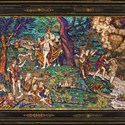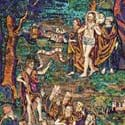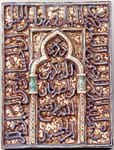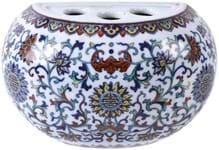The Paris museum of ethnographic art used its right of pre-emption to secure the rare survivor for a hammer price of €220,000 (£200,000) at the Drouot on May 24. The estimate was €60,000-80,000.
Masters of plumasserie
The first Conquistadors were quickly seduced by the ‘amantecas’ – masters of the art of plumasserie, the craft of preparing and applying feathers.
From 1519-24 Cortés and his men brought more than 500 feather objects back to the Iberian Peninsula while workshops and aviaries, once producing funerary textiles for the Aztec kingdoms, were put to creating objects better suited to the conversion of the indigenous population or the European kunstkammer.
Measuring 12 x 8in (30 x 20cm), a mosaic such as that sold by Coutau-Bégarie in Paris on May 24 might use close to 10,000 feathers.
They include multiple plumes from several species of hummingbird and quetzal, that were valued for their iridescence.
The subject matter, Christ the Good Shepherd and scenes from the life of John the Baptist, would have been taken from an engraving (in this case a woodcut by the German artist Hans Wechtlin) with the support provided by a wooden panel prepared with agave leaves and cotton.
Typically, the craftsmen, working for Christian missionaries, remain anonymous but a handful of the best 16th century works – including two once owned by Rudolph II of Habsburg (1552-1612) now in the Kunsthistorisches Museum in Vienna – bear the name Juan Cuiris.
His skilled technique, employing feather filaments of different shades to achieve convincing facial complexions, and use of a thin yellow feather border to enclose the composition make him a candidate for the current example.
Housed in a late-16th century ebony, bone and gilt metal frame that includes the enigmatic inscription Del Principe… followed by a monogram, the picture was in exceptional condition with its colours still vibrant.
It came for sale from a French private collection where it had been since the end of the 19th century.


















